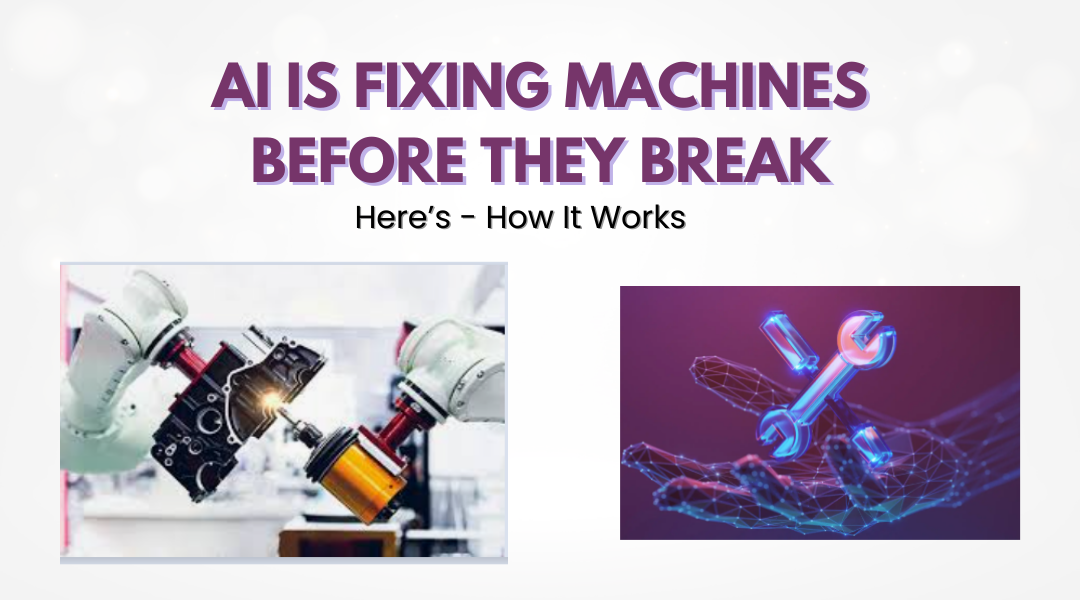Picture this: It’s 2 AM in an automotive plant when a robotic welder starts acting up. Under the old system, it might grind to a halt by sunrise, shutting down the line for hours. But today, an alert pings the maintenance team’s phones: “Bearing in Welder #14 showing 82% wear – replace within 72 hours.” Crisis averted.
This isn’t sci-fi – it’s predictive maintenance powered by AI, and it’s saving companies millions by fixing problems before they happen.
Why Fixing Things Before They Break Changes Everything
Traditional maintenance runs on two flawed approaches:
- Calendar-based: Changing parts every X months (even if they’re fine)
- Breakdown-based: Waiting for things to fail (then paying overtime for emergency repairs)
AI flips this on its head by actually listening to machines. Sensors track vibrations, temperatures, and power draws, while AI spots patterns humans would miss.
Real game-changers:
- A Midwest wind farm uses audio sensors to detect subtle blade cracks from changes in sound frequency – catching issues 3-6 months before visual inspections would
- NYC subway now predicts signal failures 2 weeks out by analyzing decades of repair logs with current sensor data
- A brewery saved $400k/year by AI-optimizing pump maintenance cycles (turns out some valves lasted 2x longer than manuals suggested)
Try this: “Compare our last 12 months of unplanned repairs – which 3 machines cost us the most in emergency callouts?”
How Smart Companies Are Using This Right Now
1. The Crystal Ball for Equipment
AI doesn’t just spot current problems – it forecasts future ones. By analyzing:
- Maintenance history
- Real-time sensor feeds
- Even weather data (humidity kills electronics)
Example: UPS trucks now get component replacements based on actual wear from street vibrations, not mileage. Result? 35% fewer roadside breakdowns.
2. Alerts That Actually Help
Ever get an alarm that just says “Error 407”? Modern systems tell you:
- What’s wrong (“Compressor #3 oil viscosity dropping”)
- How urgent (“Address within 7 days”)
- Even suggest parts to order
Pro move: One plant rigged AR glasses so technicians see repair instructions overlaid on faulty equipment.
3. The Energy Side Hustle
Predictive systems don’t just prevent breakdowns – they cut power bills. AI learns:
- Which motors run hottest at 3 PM (adjust cooling)
- When to cycle HVAC based on production schedules
- If “efficient” new equipment is actually saving energy
Shocker: A Texas data center found their “backup” generators were burning 15% more fuel than spec – AI caught it from exhaust temps.
Getting Started Without Blowing the Budget
You don’t need a full IoT overhaul. Smart teams start small:
1. Pick your pain point
Is it conveyor belts snapping? HVAC failures? Start where breakdowns hurt most.
2. Use existing data
Most plants already have:
- Maintenance logs
- Power meters
- Basic equipment sensors
3. Try before you buy
Cloud-based AI tools can analyze your data without new hardware. One forklift fleet tested predictive models using just repair records and battery voltage logs.
Red flag: Watch for vendors pushing unnecessary sensors – sometimes the data you need is already being collected (just not used).
The Bottom Line
This isn’t about replacing mechanics with robots. It’s about giving skilled workers superpowers:
- The millwright knows which bearing will fail next Tuesday
- The plant manager sees which line needs upgrades before budget talks
- The CFO gets hard numbers on risk instead of guessing at maintenance costs
The early adopters aren’t just saving money – they’re running circles around competitors still waiting for things to break. After all, in manufacturing, logistics, and energy, uptime isn’t just productivity… it’s profit.
Final thought: The best predictive system we’ve seen started with a $29 vibration sensor and a coffee can (to block factory noise). Don’t overthink it – just start listening to your machines.
